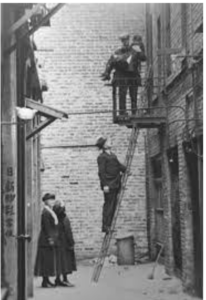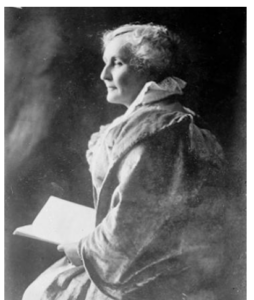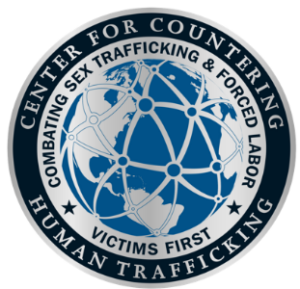One might think the crime of human trafficking is a relatively new phenomenon. The U.S. government, however, has recognized human trafficking as a crime problem for nearly 150 years. While not always referred to as such in statute, even the term “human trafficking” has been used for about 120 years in the U.S. Lest you think the first movies highlighting human trafficking were Taken (2008) with Liam Neeson, or Human Trafficking (2005), staring Mia Sorvino and Donald Sutherland, the first movie was Trafficking in Souls, a silent movie, with subtitles, which debuted in 1910 (it can be watched in its entirety on YouTube).
From the very beginning, the Department of Homeland Security, through its legacy agencies and authorities, has been on the forefront of this crime problem. In fact, its anti-trafficking heritage dates to 1875 and the passage of the Page Act which made it unlawful to “import” women into the United States for “immoral purposes”. The Page Act, though maybe not politically correct in today’s terminology and not necessarily victim-centered, set the stage for future anti-human trafficking legislation. At the time, the United States did not have a dedicated immigration service, and the responsibility for enforcing the provisions of the Act fell to the U.S. Customs Service. The Immigration Service, under the Department of Labor at the time, would not be created until 1900. Fortunately, much of this history, as seen here, has been captured and cataloged by U.S. Customs and Border Protection and the Library of Congress.
 When the Bureau of Immigration was established in 1900, U.S. Customs and the Bureau of Immigration quickly joined forces to create what would be the very first human trafficking task force. Their work largely focused, at least initially, on combatting the trafficking of Chinese women and girls into the U.S. through San Francisco, many of whom would end up in being forced to perform commercial sex acts or into various forms of forced labor. Working closely with mostly faith-based, victim-serving organizations, the Agents and Officers were diligent in identifying the victims of these crimes and removing them from exploitative environments and finding them shelter and care. At the same time, some of the very first prosecutions began to take place.
When the Bureau of Immigration was established in 1900, U.S. Customs and the Bureau of Immigration quickly joined forces to create what would be the very first human trafficking task force. Their work largely focused, at least initially, on combatting the trafficking of Chinese women and girls into the U.S. through San Francisco, many of whom would end up in being forced to perform commercial sex acts or into various forms of forced labor. Working closely with mostly faith-based, victim-serving organizations, the Agents and Officers were diligent in identifying the victims of these crimes and removing them from exploitative environments and finding them shelter and care. At the same time, some of the very first prosecutions began to take place.
Prevention efforts also began around this same time. Immigration and Customs officials began to spread the word about this crime and educate the public. One such outreach was to the maritime industry. They educated ship captains, port employees, and other transportation officials on the signs and indicators of human trafficking. This was the very first iteration of what is known today as the Blue Lightning Initiative, a combined effort of the Blue Campaign, DHS components, and the transportation industry to help stop human trafficking through the transportation sector.
The DHS victim-centered approach began to take shape about this time as did the idea of collaborating with victim service providers and community partners. The Occidental Presbyterian Mission was one such partner. Customs and Immigration Officers would work closely with these organizations to provide care to the victims of the human trafficking they would find and recover. The young women and girls would receive medical treatment, and education, and restorative care through these missions. Often, the women who ran the missions would accompany officers and agents on these operations so they could provide immediate care. The term, “rescue mission,” as it is often used today to identify shelters and safe havens in inner cities and other urban areas, is believed by some to have originated from these early, collaborative operations.
In 1910, as the crime began to spread, the Mann Act (18 U.S. Code § 2421) became law (though not a perfect law) and made it illegal to move women across state lines for immoral purposes. The relatively young Bureau of Immigration was given the statutory authority to enforce this law, regardless of one’s nationality. As a result of this growing crime trend, and to better serve the victims of this crime, in 1914 the Bureau of Immigration appointed its first female Special Agent, Mrs. Kate Waller-Barrett.
 Kate Waller-Barrett was a native of Stafford County, Virginia, a medical doctor, and the wife of an Episcopal Priest. She was no stranger to working with vulnerable and exploited women. In fact, she had made it her life’s work to help care for unwed mothers and exploited women, opening the first racially integrated homes in the nation for their care and co-founding the Florence Crittendon Mission. With the U.S. government, Kate Waller-Barrett traveled the country and around the world to identify the causative factors behind the exploitation of women, help free women from exploitation, and outline how the United States and other countries could be more victim-centered in how they responded to victims of trafficking (Dictionary of Virginia; McKinney, 2016).
Kate Waller-Barrett was a native of Stafford County, Virginia, a medical doctor, and the wife of an Episcopal Priest. She was no stranger to working with vulnerable and exploited women. In fact, she had made it her life’s work to help care for unwed mothers and exploited women, opening the first racially integrated homes in the nation for their care and co-founding the Florence Crittendon Mission. With the U.S. government, Kate Waller-Barrett traveled the country and around the world to identify the causative factors behind the exploitation of women, help free women from exploitation, and outline how the United States and other countries could be more victim-centered in how they responded to victims of trafficking (Dictionary of Virginia; McKinney, 2016).
In 1917, Kate Waller-Barrett learned that President Woodrow Wilson was about to sign an Executive Order to have the District of Columbia’s red-light district razed, an act that would ultimately lead to numerous exploited women either being jailed, left homeless, or otherwise vulnerable to further exploitation. Upon hearing the news, Barrett went to the White House and requested a meeting with the President. He agreed to the in-person meeting, and she petitioned the President to delay signing the Executive Order until she was first able to lead a group of advocates through the area, remove the exploited women, and find them suitable care and shelter. President Wilson was moved by her compelling argument and did in fact delay signing the Executive Order until such time that Kate Waller-Barrett and her team could complete their mission (ca. 1914). Kate Waller-Barrett would literally write the book on victim-centered and trauma-informed care in the early 1900’s, a practice continuing within DHS today. An elementary school in Stafford County, Virginia is named after her, as is the Alexandria, Virginia City Library, an honor bestowed in 1937.
 Today, the work of DHS to counter human trafficking, both sex and labor trafficking, continues throughout the nation and around the world. Building on this heritage, in 2020 DHS launched its Center for Countering Human Trafficking (CCHT). The mission of the CCHT, led by Homeland Security Investigations, seeks “to advance human trafficking law enforcement operations, protect victims, and enhance prevention efforts by aligning DHS’ capabilities and expertise” (CCHT). The CCHT strives to advance the protection of victims through the continued use of victim-centered and trauma-informed investigations and the provision of services to those who have been exploited and victimized by this crime, whether it be sex trafficking or labor trafficking. The CCHT also includes the DHS Blue Campaign (www.dhs.gov/bluecampaign), the U.S. government’s primary human trafficking outreach, awareness, and education initiative.
Today, the work of DHS to counter human trafficking, both sex and labor trafficking, continues throughout the nation and around the world. Building on this heritage, in 2020 DHS launched its Center for Countering Human Trafficking (CCHT). The mission of the CCHT, led by Homeland Security Investigations, seeks “to advance human trafficking law enforcement operations, protect victims, and enhance prevention efforts by aligning DHS’ capabilities and expertise” (CCHT). The CCHT strives to advance the protection of victims through the continued use of victim-centered and trauma-informed investigations and the provision of services to those who have been exploited and victimized by this crime, whether it be sex trafficking or labor trafficking. The CCHT also includes the DHS Blue Campaign (www.dhs.gov/bluecampaign), the U.S. government’s primary human trafficking outreach, awareness, and education initiative.
With a rich and storied history of working human trafficking cases, combined today with a modern Center for Countering Human Trafficking (the only one of its kind), a statutory mandate, collaborative relationships (in and out of government), new technology, and a passionate team of Special Agents, Officers, analysts, program managers, and outreach specialists, Homeland Security Investigations and it partners in Customs and Border Protection, the Transportation Security Administration, U.S. Citizenship and Immigration Services, others throughout the Department of Homeland Security, and its state, local, and tribal law enforcement partners, are continuing the work they’ve done for nearly 150 years. Their efforts are well recognized, and the outcomes of their efforts are making a difference each day in the lives of those who have been exploited and in the relentless targeting for investigation and prosecution of those who seek to exploit and abuse the vulnerable for profit.
For more information and source information please see the following resources:
(ca. 1914) Delays signature of bill to abolish red light district–President gives social workers a chance to act., ca. 1914. [Jan] [Photograph] Retrieved from the Library of Congress, https://www.loc.gov/item/2002719328/.
DHS Center for Countering Human Trafficking. Department of Homeland Security. (n.d.). https://www.dhs.gov/dhs-center-countering-human-trafficking
Chisolm-Straker, M., & Chon, K. (2021). The historical roots of human trafficking: Informing primary prevention of commercialized violence. Springer.
Dictionary of Virginia – Katherine Harwood Waller Barrett (24 January 1858-23 February 1925) Biography. The Library of Virginia. (n.d.). https://www.lva.virginia.gov/public/dvb/bio.asp?b=Barrett_Katherine_Harwood_Waller
McKinney, D. D. (2016, August 1). History frontline feature 1. Immigration Special Agent confronts human trafficking in 1914. https://www.cbp.gov/frontline/history-frontline-feature-1
U.S. Customs and Border Protection. (n.d.). Did you know? https://www.cbp.gov/about/history/did-you-know
Siler, J. F. (2019). The white devil’s daughters: The women who fought slavery in San Francisco’s Chinatown. Alfred A. Knopf.
*Kate Waller Barrett photo courtesy of the Library of Congress





